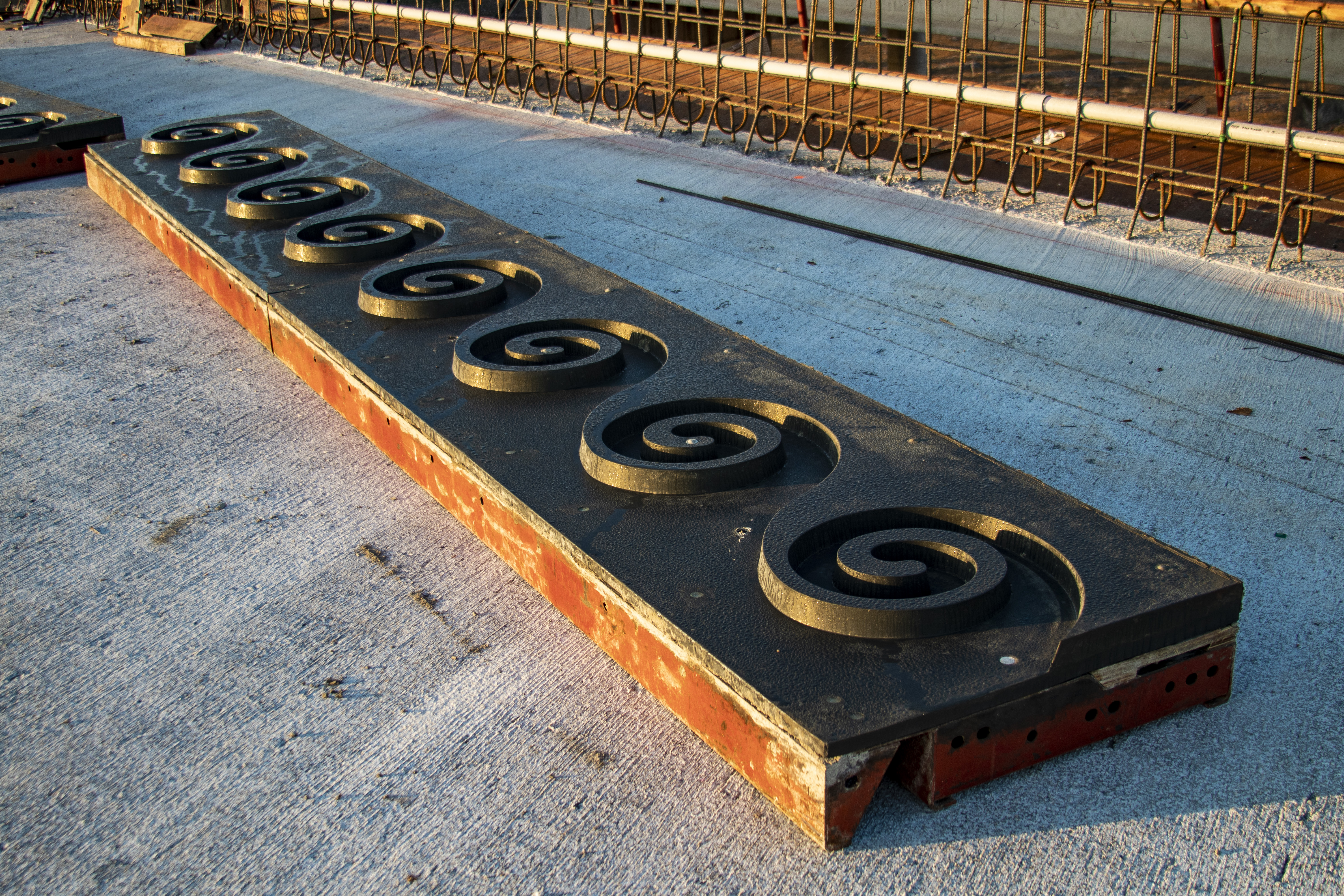Arizona highway artwork tells the stories of local communities, and looks good doing it
Arizona highway artwork tells the stories of local communities, and looks good doing it
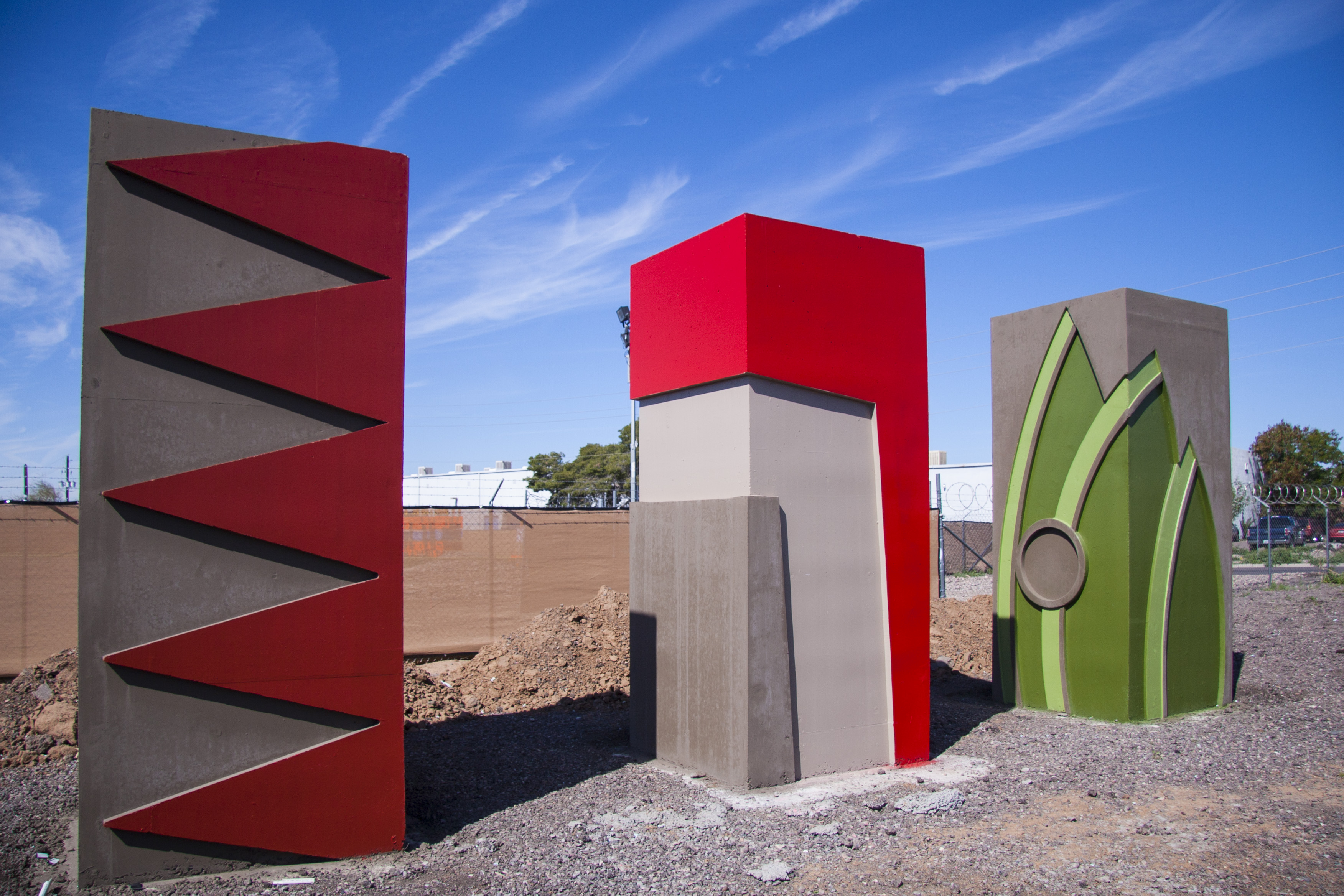
Similarly to how artwork adorns the walls of museums, artwork also adorns the walls, bridges and columns of Arizona’s highways.
Often created by local artists and inspired by the communities and agriculture of the surrounding areas, the artwork tells the story of Arizona’s cities and towns. And it’s not just aesthetically pleasing, the artwork serves a purpose. It breaks up the monotony of blank highway walls, actually helping people focus better on the roadway.
From rock art to concrete murals and mosaic tiles, there is an endless amount of beauty to see on your commute or road trip. Here are just some examples of the beautiful artwork you can see along Arizona’s highways:
SR 84 Historic Casa Grande Underpass Mosaic
This artwork was created by the Casa Grande Mosaic Creative Communities Team, which was awarded a grant for the project from Arizona Commission on the Arts and Arizona State University’s Herberger Institute for Design and the Arts.
The three mosaics were part of an effort to revitalize Union Pacific Railroad underpass, which welcomes drivers to Casa Grande. They are said to represent the town’s past, present and future, with some tiles made by members of the community and featuring handprints from local children.
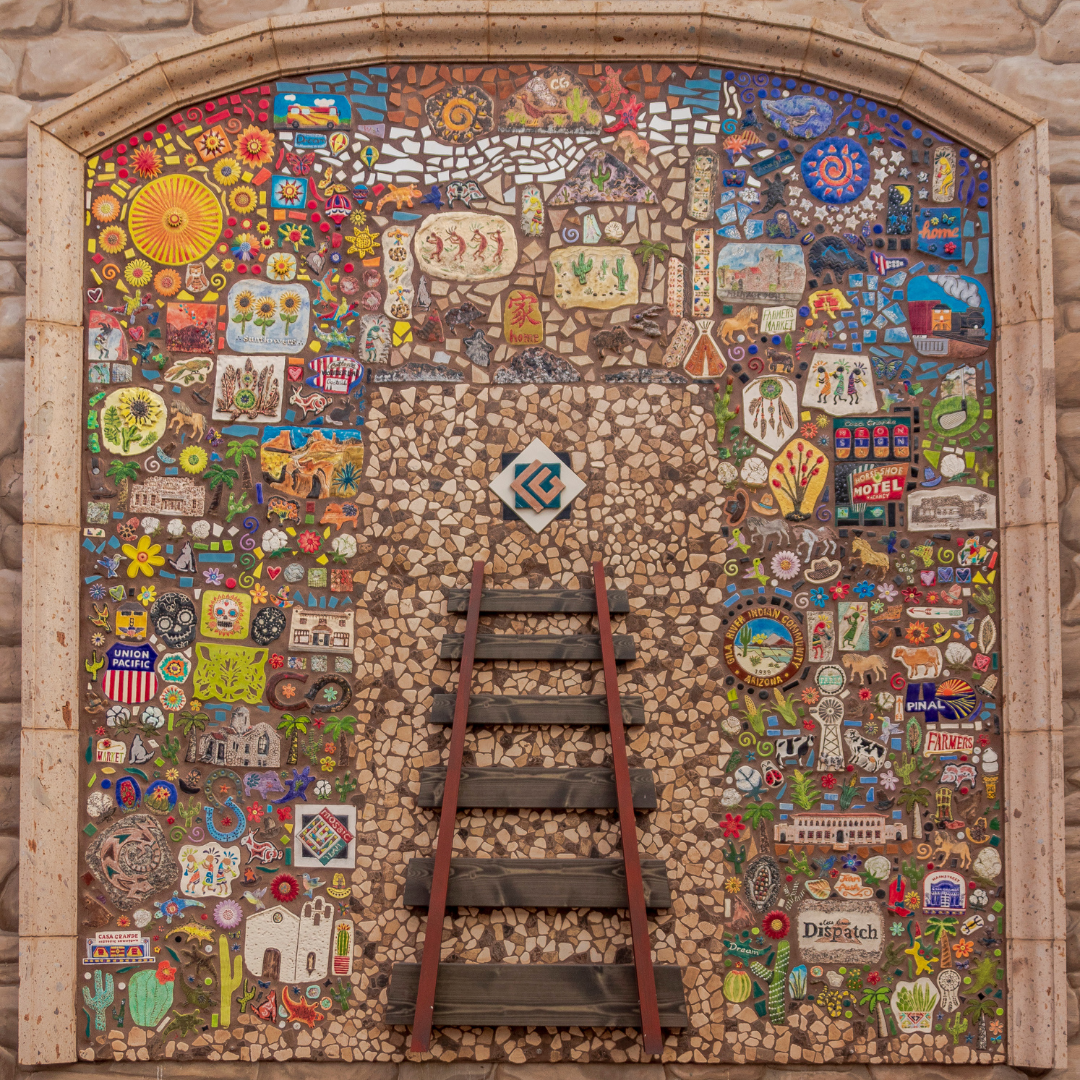
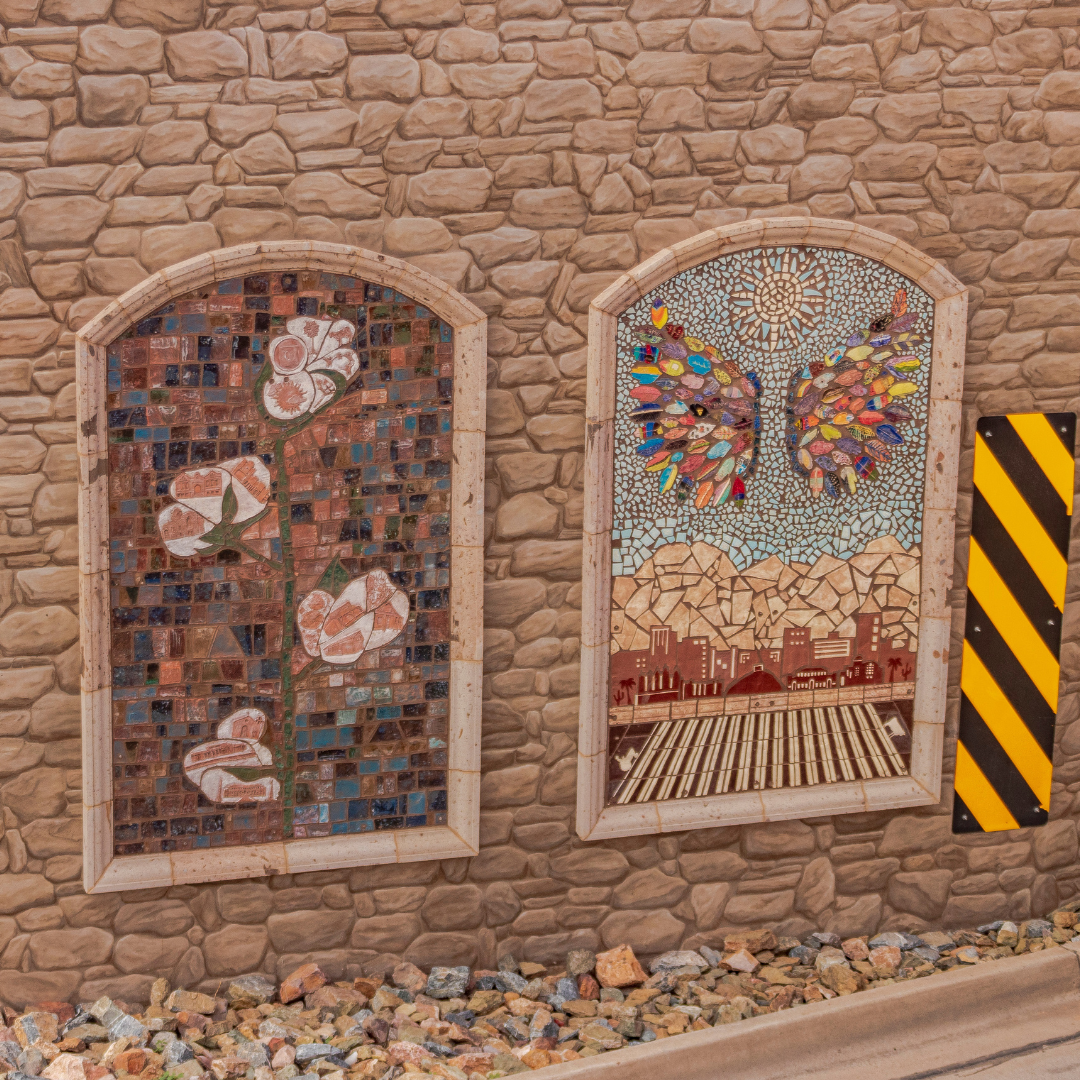
Loop 101 Pima in Scottsdale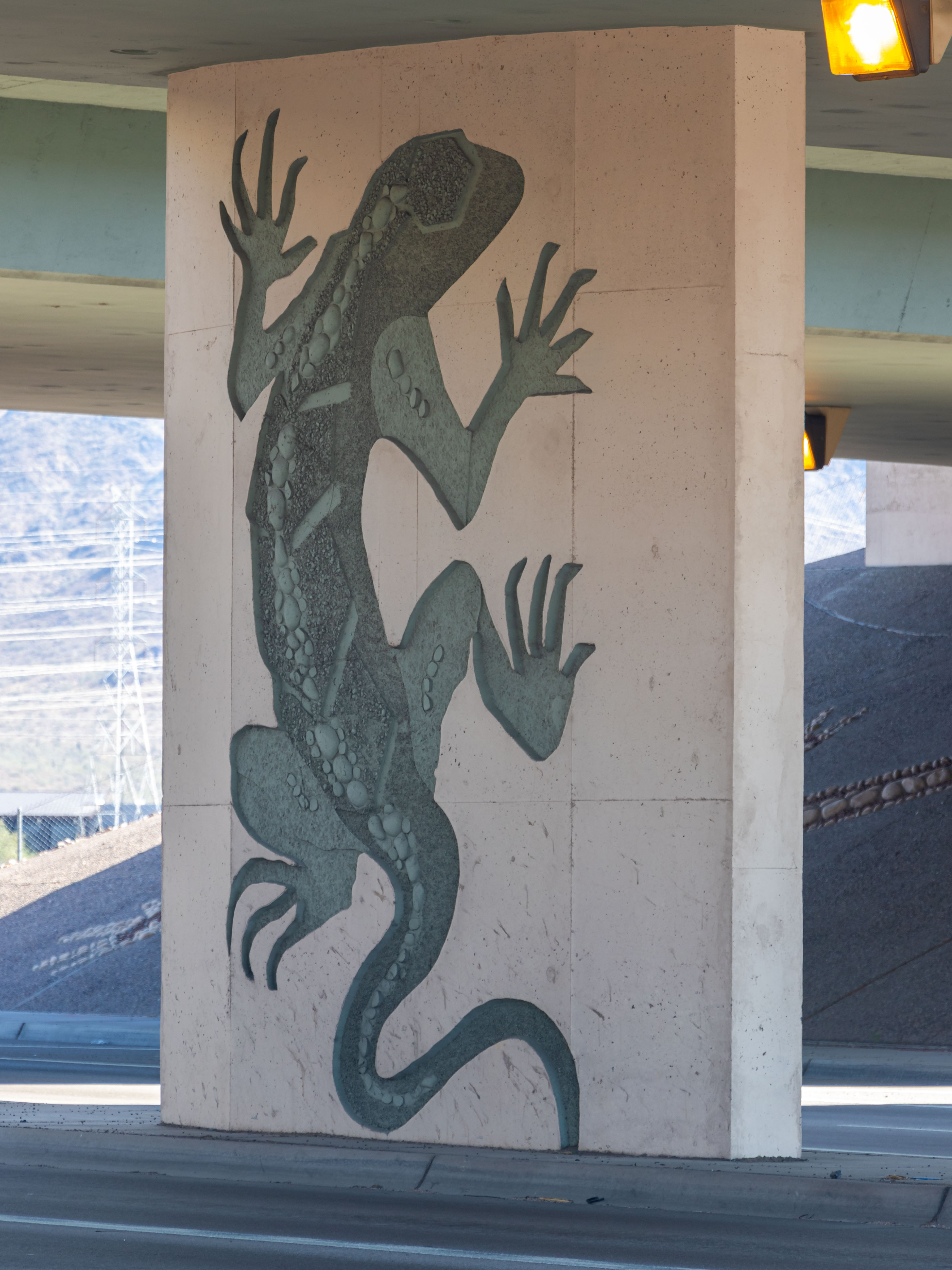
The lizard murals on the columns of the Loop 101 overpass in Scottsdale were created by a design team that included local landscape architect Jeff Engelmann, Colorado-based artist Carolyn Braaksma, and local architect Andrea Forman.
The design team consulted with museum curators, botanical garden staff and the community to create the lizard as part of a desert theme. The team was assembled by the City of Scottsdale, which proposed and funded the project to add this and other public artwork along the highway.
“Renowned for its thriving arts community, the City of Scottsdale was anxious to preserve its artistic reputation and minimize the impact of the $131 million project on citizens and visitors,” according to a USDOT blog
Interstate 19 at Ajo Way in Tucson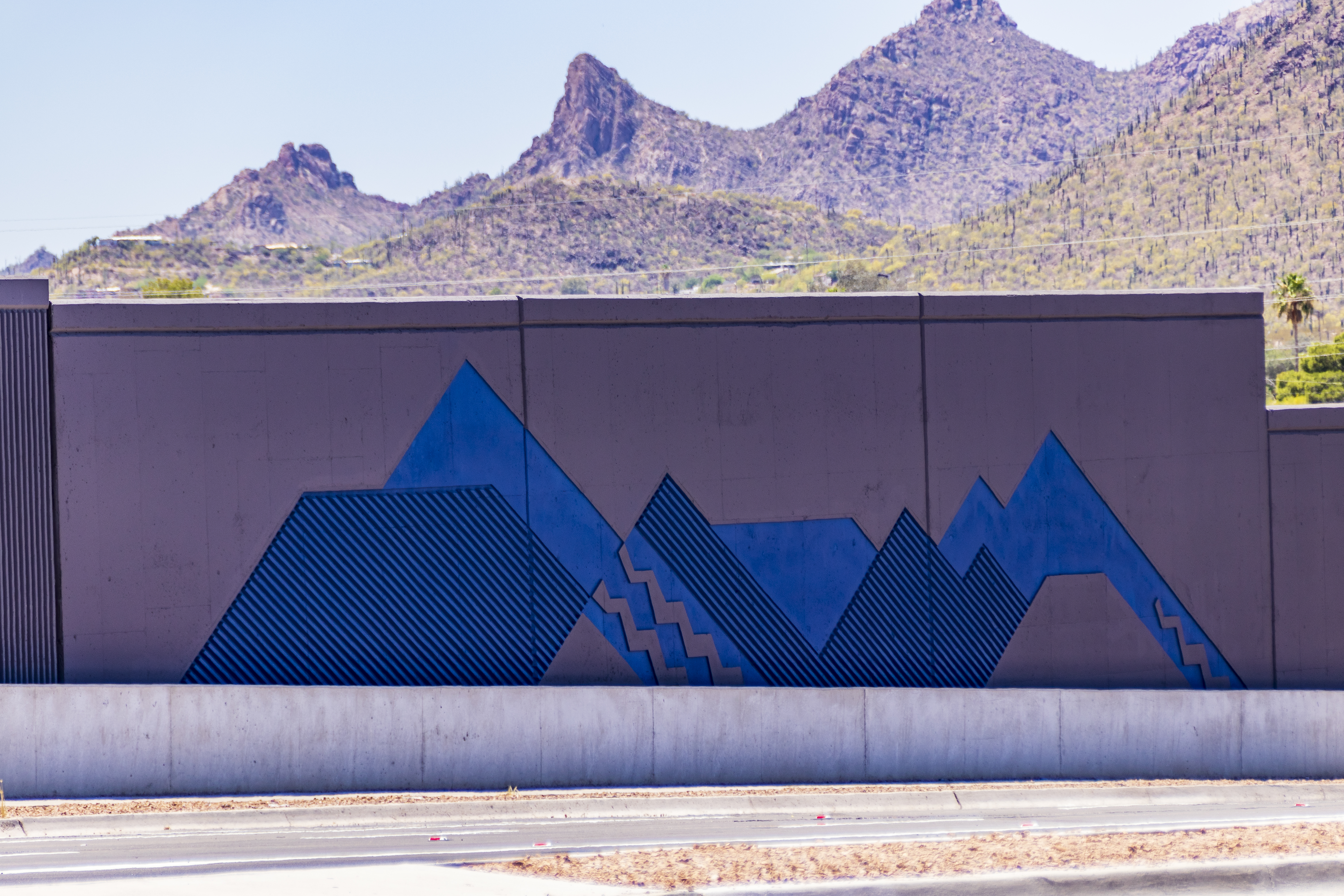
The blue mountains that came to be during the I-19 improvement project were designed to mirror the natural landscape of the area, which is especially evident in the picture to the right with the real thing towering over the mural.
There are also other murals nearby along I-19 depicting birds, butterflies and saguaros in the same bold blue color, creating an intentionally cohesive aesthetic.
Loop 101 Pima at Cave Creek Road
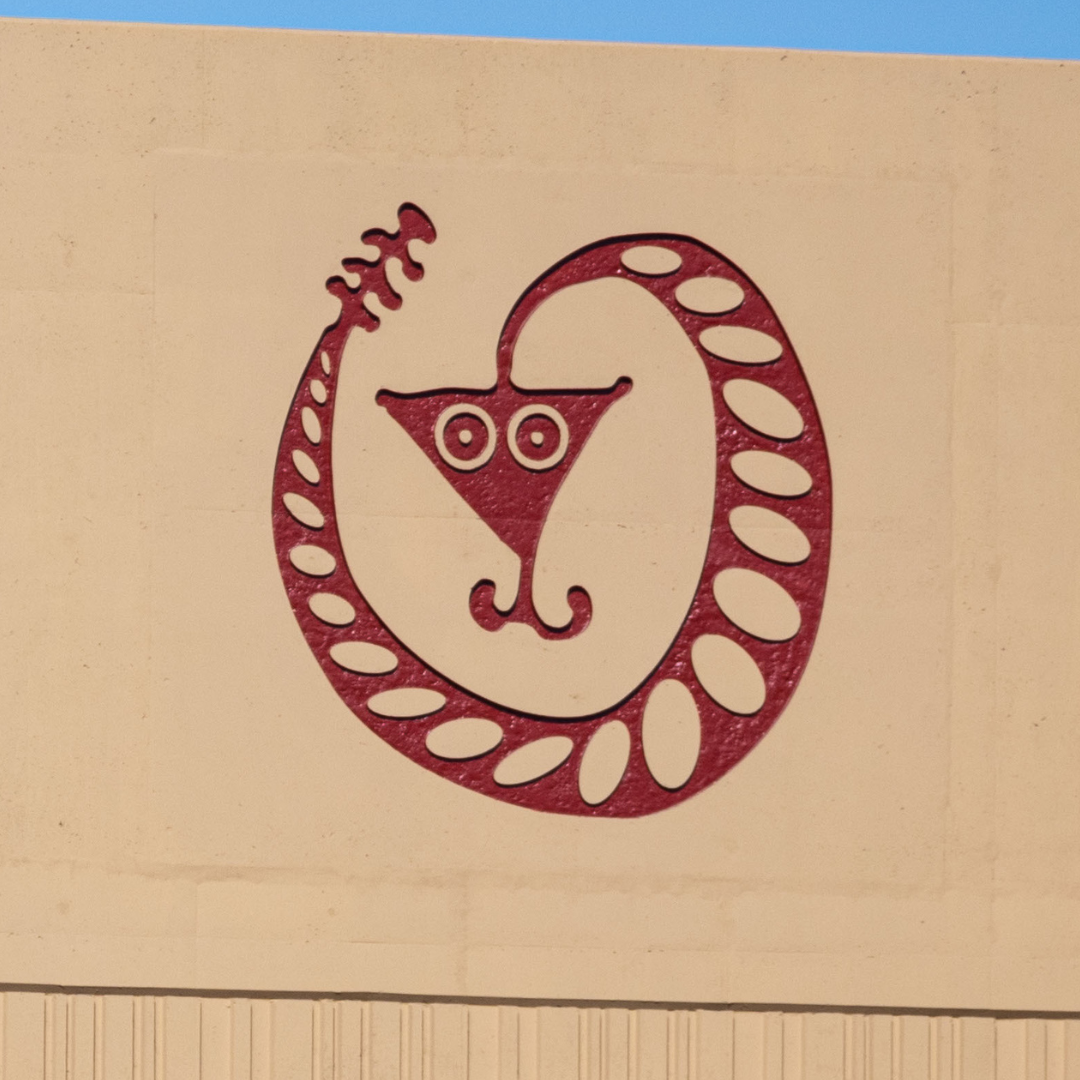 This mural of a Hohokam coiled snake petroglyph was inspired by the rattlesnakes that live in the area, <according to Joe Salazar, ADOT Project Team Leader for Landscape Architecture and Aesthetics.
This mural of a Hohokam coiled snake petroglyph was inspired by the rattlesnakes that live in the area, <according to Joe Salazar, ADOT Project Team Leader for Landscape Architecture and Aesthetics.
Along with this picture on the soundwall at Cave Creek, this little guy can be found in the area, along with other red murals depicting birds, lizards and cactuses to reflect the area's archaeological history and wildlife.
“The inspiration is there in the desert, but there are also rattlesnakes in the area,” Salazar said. “There are some trails that go up along the mountainside. It can also be an informational icon just letting people know what the reptile wildlife is in the area.”
State Route 189 Columns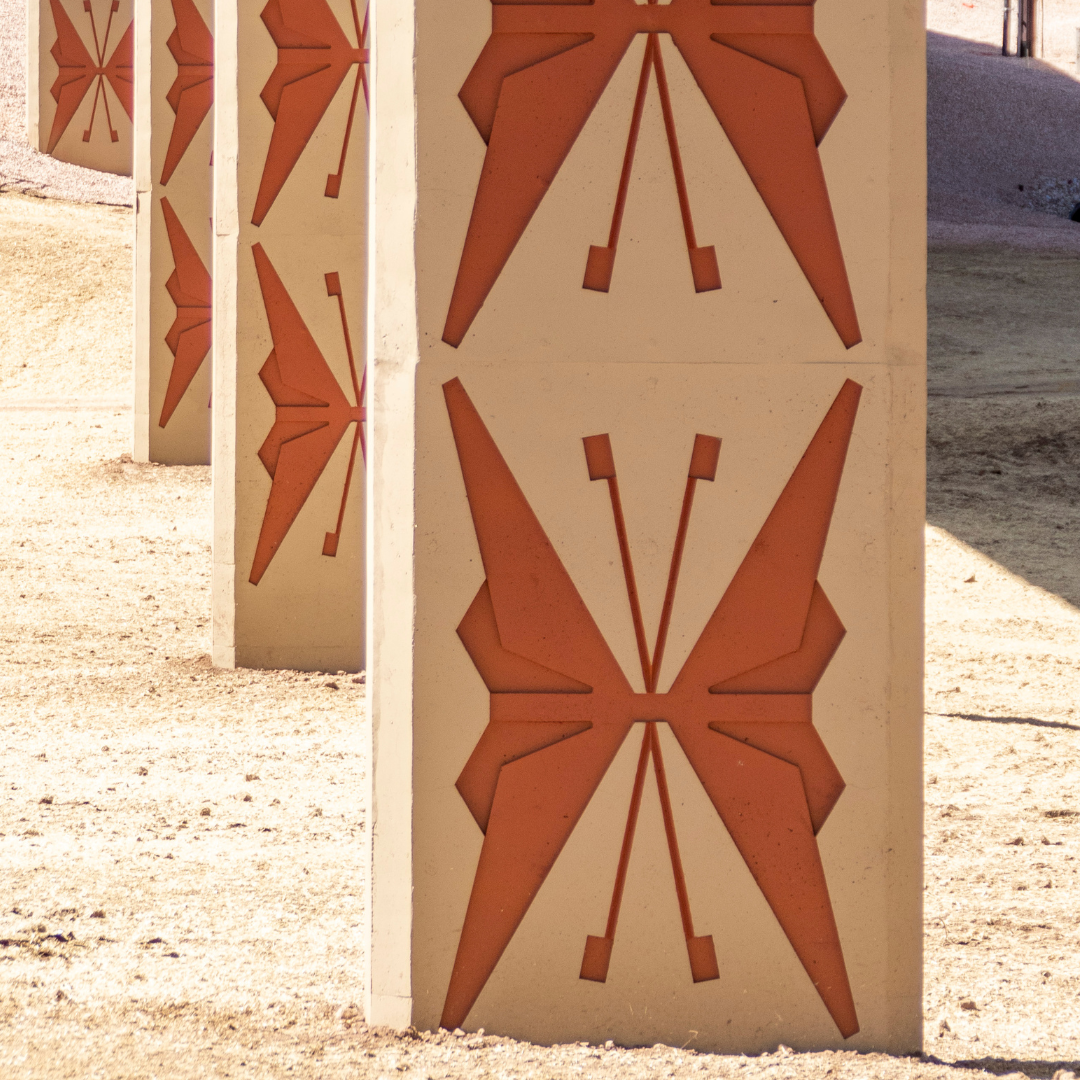

ADOT’s roadside development team studied the cultural and historical context of the Nogales Port of Entry area and learned that SR 189 is also known as Mariposa (Spanish for butterfly). Thus, the design was born.
“It represents movement and transportation, which ties in with the busy Nogales Port of Entry that has a lot of trade going back and forth,” Joseph Salazar, the project aesthetic manager, said. You can read more about it here.
I-10 Jimmie Kerr Bridge in Casa Grande
After studying the region’s history, culture, flora and fauna, the design team — which included ADOT Roadside Development along with Grace Engineering and Wheat Design Group — was inspired by ancient Hohokam culture and the pottery vessels the Hohokam would use to transport and store water to create these matching murals.
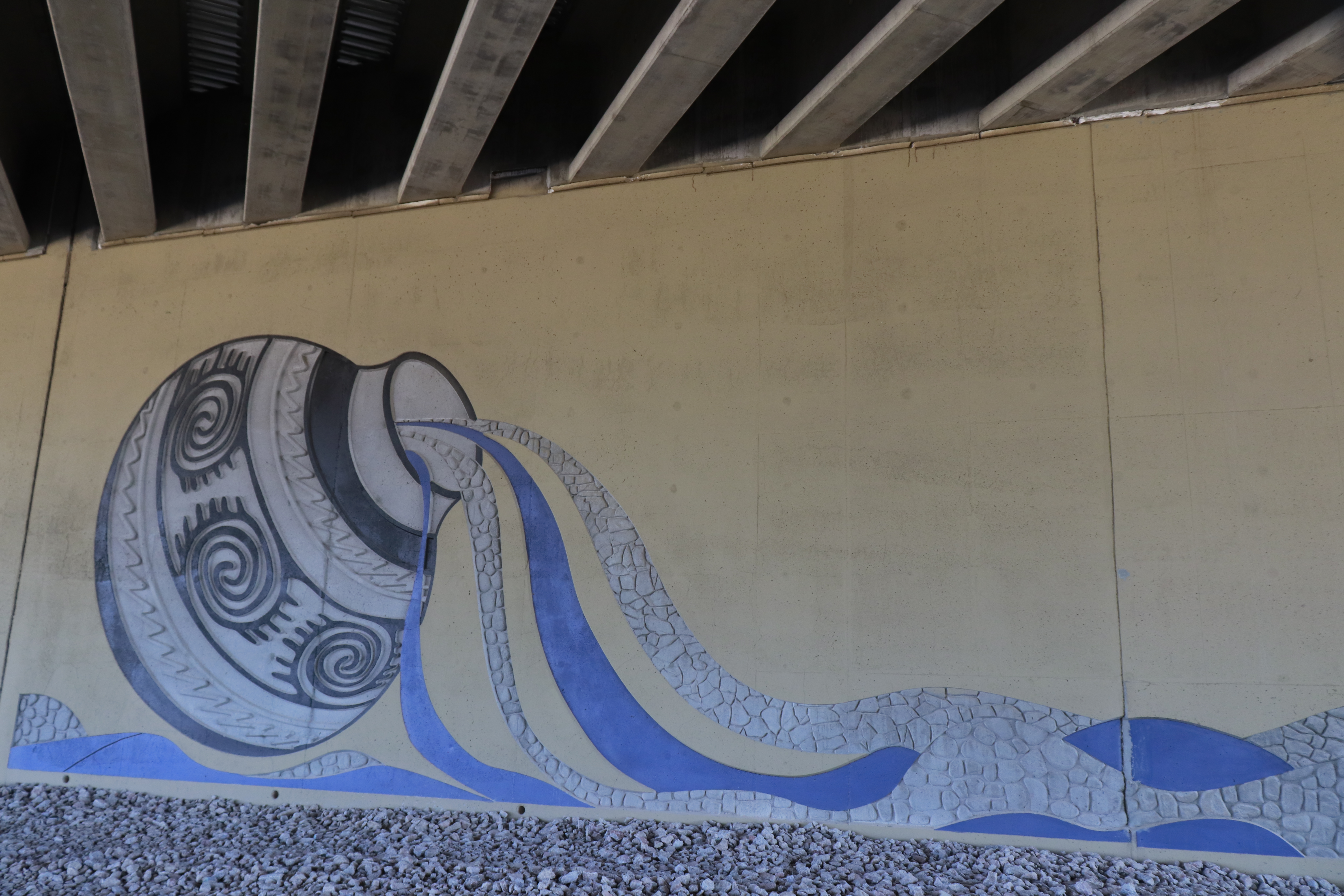
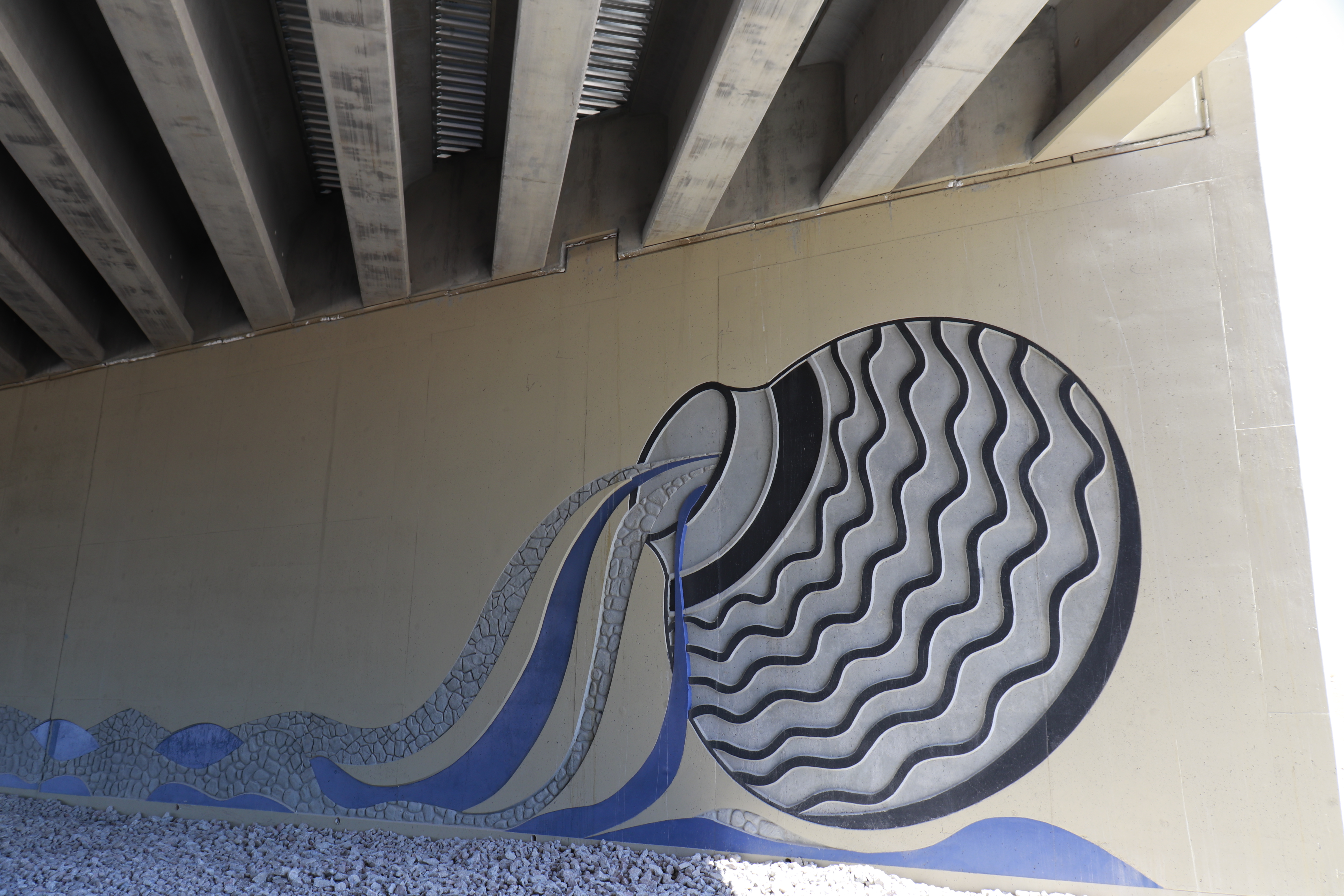
I-10 and I-19 Traffic Interchange in Tucson
The colorful designs on these columns feature depictions of sunflowers, vines, corn, squash and beans, representing the agricultural history of the area.
ADOT staff developed the project themes in conjunction with the local landscape architecture firm Wheat Design Group (formerly Wheat Scharf Associates) and local residents.
Loop 303 and Interstate 10 Interchange
This and similar rock designs, called landform graphics, were developed by Joseph Salazar, who is ADOT’s landscape architectural project design manager for the Roadside Development section.
Salazar, who has been at ADOT for more that 30 years and recently won a lifetime achievement award for his design work, came up with the idea when he wanted to create something visually pleasing but had limited resources.
Rock landscaping, which uses different colored crushed granite to create designs, is cost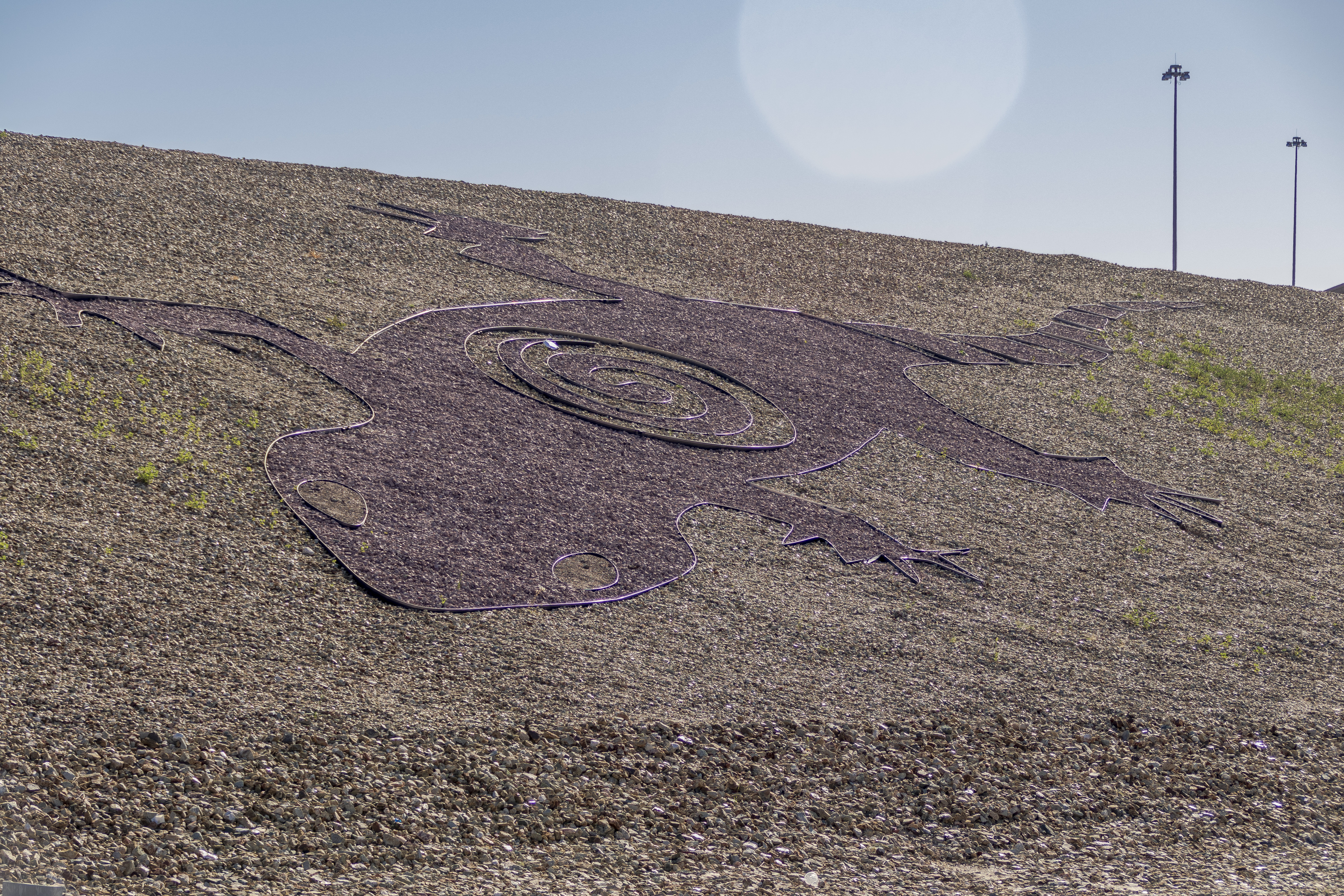 effective and requires very little upkeep compared to some plants. And on top of all that, it also helps control erosion and dust, making it a very practical and sustainable artform.
effective and requires very little upkeep compared to some plants. And on top of all that, it also helps control erosion and dust, making it a very practical and sustainable artform.
A lizard at the Loop 303 and I-10 interchange is pictured here, but you can also see this innovative method implemented along other portions of highway in the Valley, including where it was first used, on SR 143 heading toward Phoenix Sky Harbor Airport.
Loop 202 South Mountain Underpass at Southern
The design on these columns were created by ADOT’s Joseph Salazar and the Cosanti Foundation, which took inspiration from Arcosanti founder Paolo Soleri’s work and the area's agricultural heritage. It was referred to as the Leaf Portal Pattern, according to records, because the circles represent “portals into the future or out of the past.”
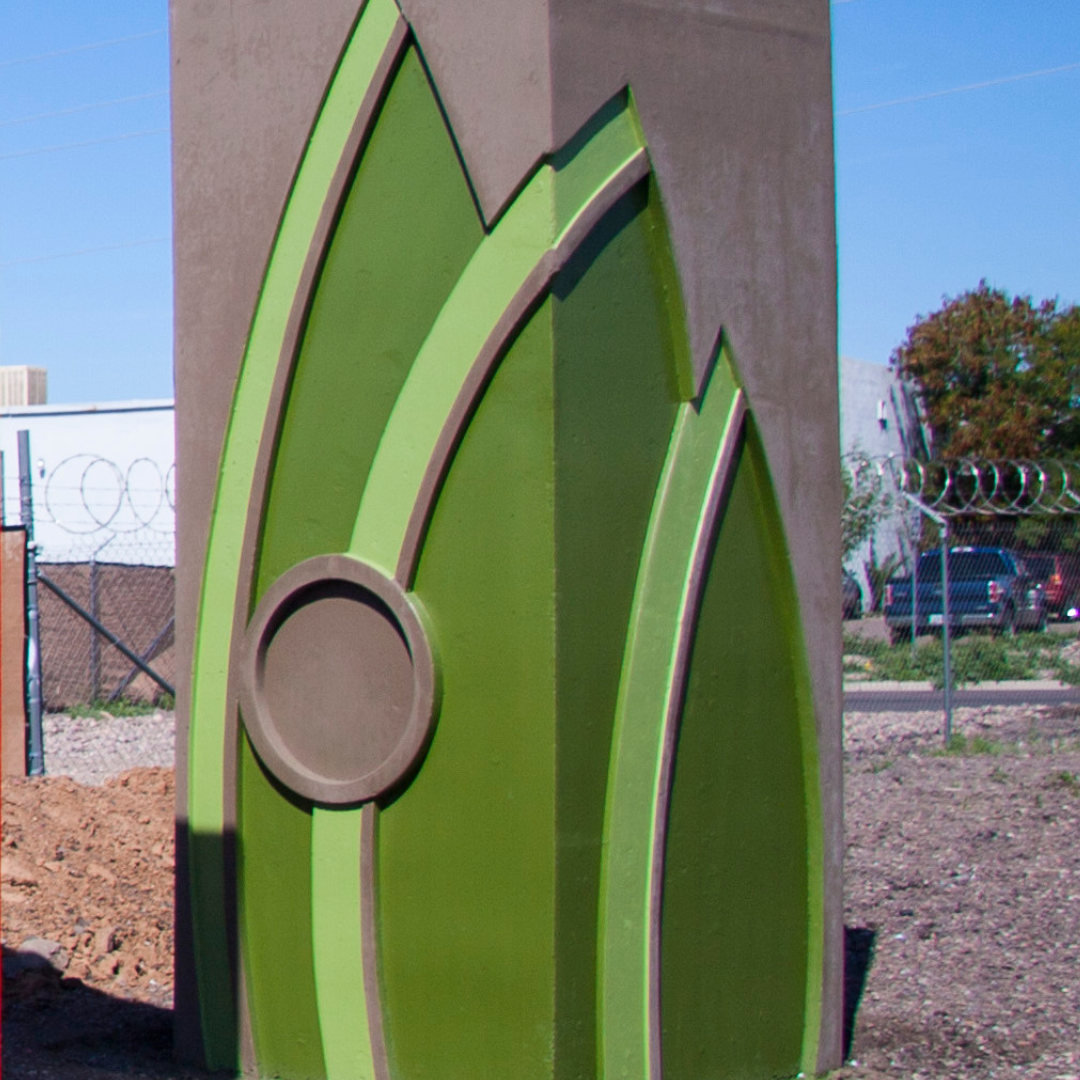
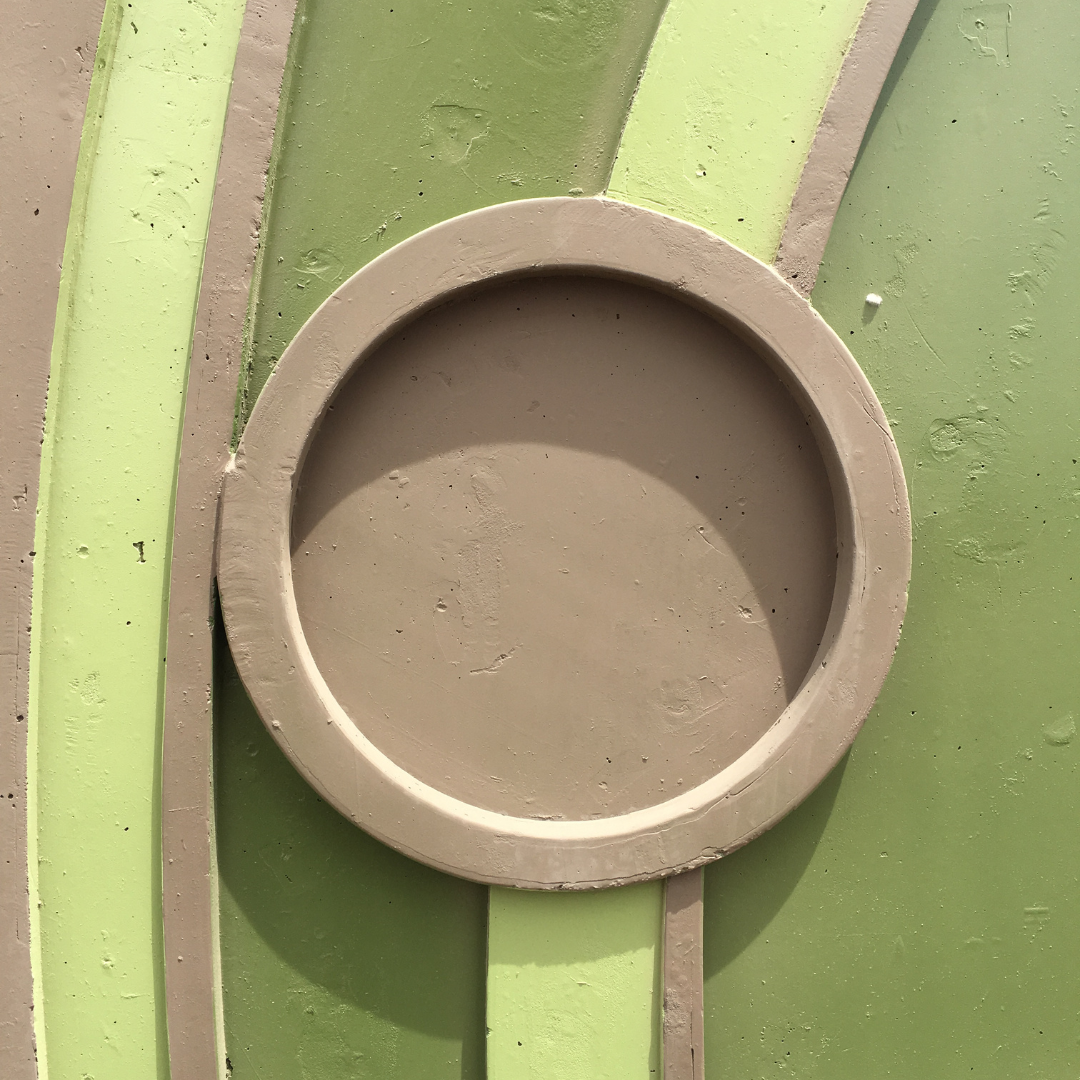
Salt River Bridge over Loop 202 South Mountain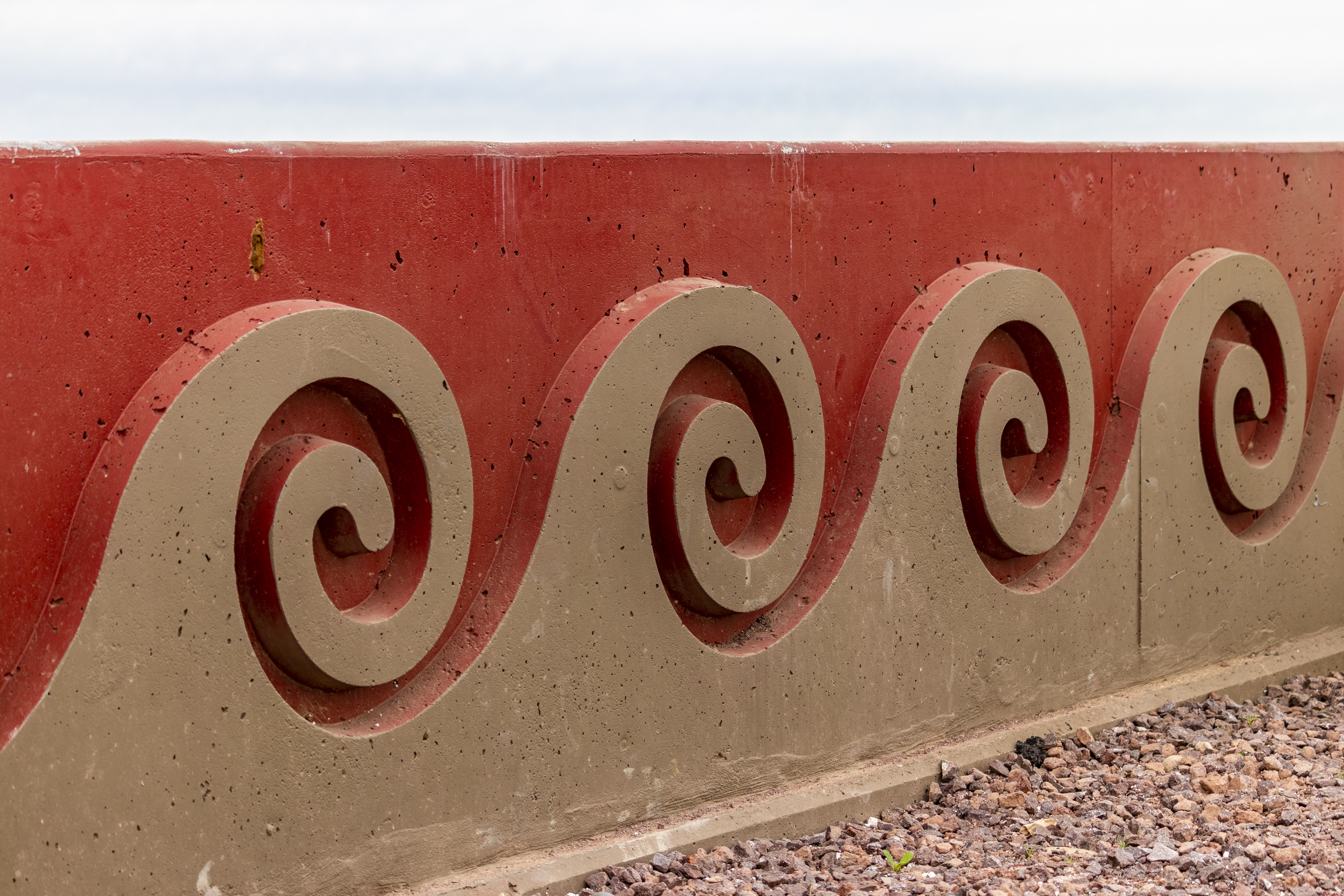
This design was created by ADOT’s project team, in collaboration with artists from the Cosanti and Frank Lloyd Wright foundations, and others.
The design is pressed into the concrete using a metal stamp, and has been used in other projects across the Valley. Along with the Salt River Bridge, you can also spot it on SR 143 heading to Phoenix Sky Harbor Airport and the new I-10 Broadway Curve project.
